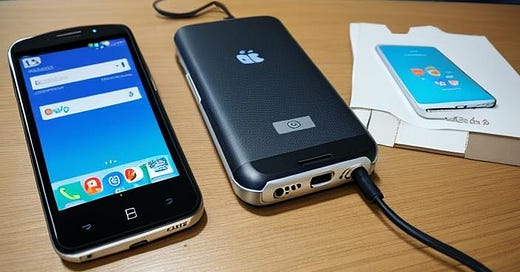How to speed up or reuse them

Here are some tips for speeding up an old PC or phone:
• Clear out clutter and uninstall unused apps — Go through your app list and remove any apps you no longer use. Also, delete old files, clear browser caches, and remove bloatware that came pre-installed. This frees up storage space and memory.
• Disable visual effects — On a PC, disabling transparency and animations in the system settings can save resources for other tasks. On Android, switch animation scales to 0.5x or off.
• Add more RAM — Increasing RAM allows the device to run more processes efficiently. On a PC you can add more RAM sticks, on a phone you may be able to free up RAM by clearing app caches.
• Factory reset — Wiping the device and reinstalling the OS clears out all accumulated junk and restores it to original settings. Back up data first.
• Replace the hard drive — On PCs, switching from a mechanical hard drive to an SSD significantly speeds up boot times and app launches.
• Overclock the CPU — On PCs, cautiously overclocking the CPU can increase performance if your system has thermal headroom. Not recommended for laptops.
• Disable startup programs — Prevent apps and programs from launching at boot to increase boot speed. Only keep essentials like security software enabled.
• Update software and drivers — Make sure your OS, firmware, and drivers are all up to date to fix bugs and optimize performance. Keep apps updated too.
• Lower screen resolution — Less pixels means less GPU work. On a PC try 1280x720, on phone switch from WQHD to 1080p.
• Close background tasks — Freeze or force stop apps you aren’t using so they’re not taking up resources.
How to Reuse an Old PC or Phone
For Old Computers:
1. Upgrade It:
◦ Research compatible hardware upgrades for your old PC, such as additional RAM or a larger hard drive.
◦ Follow online tutorials or manufacturer guides to safely open your computer and install the new components.
◦ Ensure you have the necessary tools and anti-static precautions to prevent damage during the upgrade process.
2. Use it as a Home File Server:
◦ Install a lightweight operating system suitable for file sharing, such as FreeNAS or OpenMediaVault.
◦ Configure network sharing settings to allow access to files from other devices on your home network.
◦ Organize your files and set up user permissions for secure access control.
3. Play Retro Games:
◦ Install retro gaming emulators like RetroArch or DOSBox on your old PC.
◦ Download ROMs of classic games you want to play and configure the emulator settings for optimal performance.
◦ Connect compatible controllers or input devices for an authentic gaming experience.
4. Create a Wi-Fi Hotspot:
◦ Install virtual router software like Connectify or MyPublicWiFi on your old PC.
◦ Configure the hotspot settings, including network name (SSID) and password, to secure your wireless connection.
◦ Share your internet connection from the old PC to other devices within range.
5. Contribute CPU Cycles:
◦ Join distributed-computing projects like Folding@Home or BOINC by downloading their software.
◦ Select the research projects you want to support and configure the software to run calculations using your old PC’s processing power.
◦ Monitor your contribution and see how your computing power is helping scientific research.
For Old Laptops:
1. Use it as an Additional Monitor:
◦ Download software like SpaceDesk or Duet Display on both your old laptop and primary device.
◦ Connect the two devices using a USB cable or over Wi-Fi, depending on the software requirements.
◦ Configure display settings on both devices to extend or mirror your screen as needed.
2. Convert it into a Game Server:
◦ Install server software like Minecraft Server or SteamCMD on your old laptop.
◦ Set up port forwarding on your router to allow external connections to the game server.
◦ Invite friends or family to join your game server and enjoy multiplayer gaming sessions.
3. Back Up Your Files:
◦ Transfer important files from your current device to the old laptop using a USB drive or cloud storage service.
◦ Organize files into folders and create regular backup schedules using built-in backup tools or third-party software.
◦ Keep the old laptop connected to power and ensure it has sufficient storage space for backups.
Repurposing old devices requires some technical knowledge and effort, but it can be a rewarding way to extend their usefulness and contribute positively to various activities.





